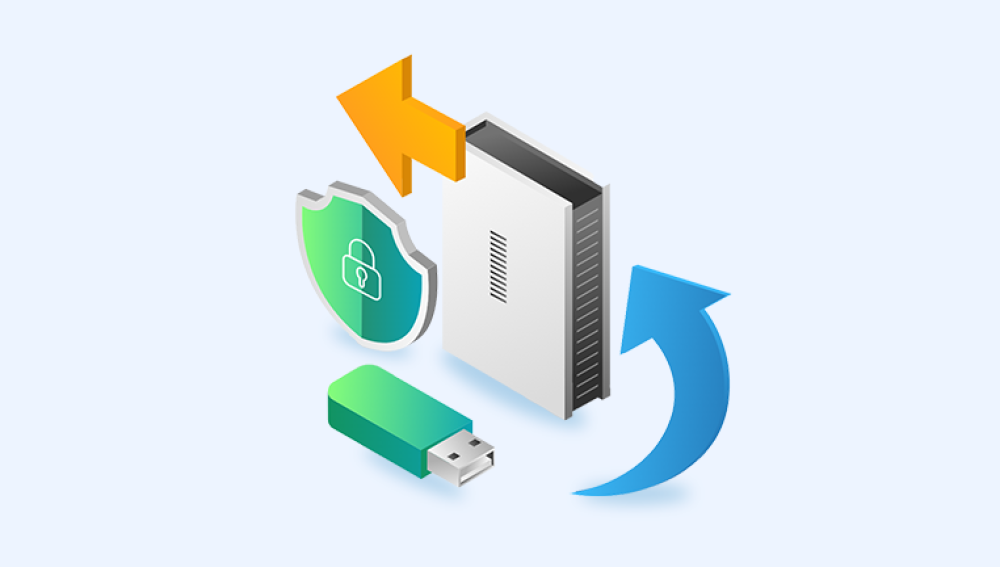When a file is deleted normally (i.e., by pressing the "Delete" key), it typically goes to the Recycle Bin. But when a file is permanently deleted either by using Shift + Delete or by emptying the Recycle Bin it seems like it's gone forever. Fortunately, that's not necessarily the case.
Chapter 1: Permanent Deletion
To recover a file, it's helpful to understand what "permanent deletion" really means.
1.1 What Happens When You Permanently Delete a File?
When you delete a file using Shift + Delete or clear the Recycle Bin, the file doesn't actually vanish. Instead, the space that it occupied on your storage drive is marked as "available." The file's data remains until it’s overwritten by new data. This means, if you act quickly, there’s a high probability of recovering it.

1.2 Why Recovery Is Still Possible
Modern operating systems do not immediately remove file data upon deletion. They only remove the reference to the file in the file system index. The actual data remains intact on the disk until another file uses that storage space.
Chapter 2: Initial Actions to Take After Deletion
2.1 Stop Using the Drive
Avoid saving new files, downloading programs, or performing updates on your PC. New data can overwrite the space where the deleted file exists.
2.2 Close Non-Essential Applications
Many programs use temporary files or caches that could overwrite deleted data. Shut down unnecessary applications before starting recovery.
Chapter 3: Checking for Backup Options
Before moving on to recovery software, ensure you’ve exhausted all backup and restore options.
3.1 Windows File History
If enabled, File History regularly backs up your files.
Navigate to the folder where the deleted file was stored.
Right-click inside the folder and select “Properties.”
Go to the “Previous Versions” tab.
If previous versions are listed, choose one and click “Restore.”
3.2 System Restore
While not typically used for file recovery, restoring your system to an earlier state might retrieve some lost files if they were part of system-critical folders.
3.3 OneDrive or Other Cloud Services
If you use cloud services like OneDrive, Dropbox, or Google Drive, check their respective "Recycle Bin" or "Trash" folders. Most keep deleted files for 30 days.
Chapter 4: Using Data Recovery Software
If no backup exists, the next best step is to use data recovery software.
4.1 Top Tools for File Recovery
Drecov Data Recovery
Drecov Data Recovery is a powerful and user-friendly tool designed to recover permanently deleted files from desktops, laptops, and external storage devices. Whether files were lost due to Shift + Delete, emptied Recycle Bin, accidental deletion, or formatting, Drecov Data Recovery offers a reliable solution to retrieve your data quickly and efficiently.
When files are permanently deleted, they’re not immediately erased from the drive. Instead, the system marks the space they occupied as available for new data. Until that space is overwritten, the original files remain recoverable. Drecov Data Recovery takes advantage of this by using advanced scanning algorithms to locate and restore these lost files, even after a significant amount of time has passed.
4.2 How to Use Recovery Software
Download and Install
Install the software on a drive other than the one where the files were deleted.
Launch the Software and Select the Drive
Choose your desktop drive (usually C:) as the target.
Choose Scan Type
Start with a quick scan, and if results are unsatisfactory, proceed with a deep scan.
Preview and Recover Files
Use the preview function (if available) to check if files are intact before restoring them.
Save to a New Location
Always restore recovered files to a different location to avoid overwriting recoverable data.
Chapter 5: Command-Line Recovery Methods
If you prefer using built-in Windows tools:
5.1 Windows File Recovery Tool (Microsoft)
This free tool from Microsoft allows you to recover deleted files using CMD.
Steps:
Download from the Microsoft Store.
Open Command Prompt as Administrator.
Run the command:
bash
CopyEdit
winfr C: D:\Recovery /regular /n \Users\YourUsername\Desktop\filename.ext
Replace C: with the source drive and D:\Recovery with the target folder for saving recovered files.
Chapter 6: Professional Data Recovery Services
If all else fails, professional data recovery services can offer a last resort.
6.1 When to Use Professionals
Physical damage to the drive.
Unsuccessful software recovery attempts.
Valuable or sensitive data.
6.2 What to Expect
Diagnostic evaluation (usually free or low-cost).
Non-invasive recovery (software) or invasive recovery (cleanroom).
Cost varies from $100 to thousands, depending on severity and urgency.
6.3 Top Providers
DriveSavers
Ontrack
SalvageData
Seagate Recovery Services
Chapter 7: Preventing Future Data Loss
Prevention is the best cure. Adopt habits that protect your data moving forward.
7.1 Use Cloud Storage
Storing important files on cloud platforms like Google Drive or OneDrive adds an automatic backup layer.
7.2 Enable File History
Turn on File History in Windows:
Go to Settings > Update & Security > Backup.
Click Add a drive and select your backup location.
7.3 Schedule System Backups
Use tools like Windows Backup, Mac Time Machine, or third-party utilities to regularly create system images.
7.4 Avoid Using Shift + Delete
Unless you’re absolutely certain, don’t use Shift + Delete. Let the file go to the Recycle Bin first.
Chapter 8: Recovery from Special Scenarios
8.1 Formatted Desktop Drive
If you've formatted your system drive, recovery is still possible if you act quickly. Deep scan tools like PhotoRec or EaseUS can help retrieve lost data.
8.2 Corrupted Desktop Files
If the desktop folder or user profile becomes corrupted, use tools like chkdsk or SFC:
Open CMD as admin and run:
bash
CopyEdit
chkdsk C: /f /r sfc /scannow
These may fix file system errors that make files invisible or inaccessible.
Chapter 9: Myths About Deleted Files
9.1 "Once Deleted, It’s Gone Forever"
False. As we've seen, files can be recovered unless they’ve been overwritten.
9.2 "You Need to Be an Expert"
Most recovery software is user-friendly. Anyone who can use a computer can follow simple steps to recover lost files.
9.3 "Free Tools Aren’t Effective"
Some free tools like Recuva are surprisingly effective for recent deletions.
Chapter 10: Real-World Success Stories
Case Study 1: Freelance Designer Recovers Portfolio
A freelance graphic designer accidentally deleted her entire design folder using Shift + Delete. Using Disk Drill, she was able to recover 95% of her files, including high-res client logos.
Case Study 2: Student Recovers Thesis
A college student deleted his thesis draft days before submission. Recuva helped him recover the Word file from his desktop within minutes.




